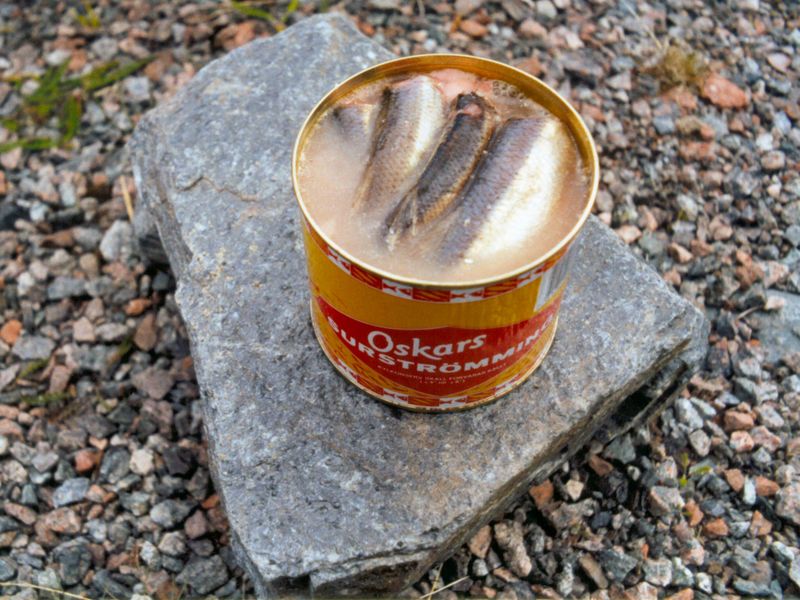|
|||||
|
|||||||
|
    An initiative of :Stichting Food-Info
|
| Food-Info.net> Questions and Answers > Food products > Fish What is surströmmingSurströmming (sour herring) is a typical Swedish dish consisting of fermented (Baltic) herring. It originates from the coastal region of Sweden, North of Stockholm. The herring is caught in spring, when it is in prime condition and just about to spawn. The herring are fermented in barrels in the presence of salt for one to two months. The product is then canned, but not pasteurised or sterilised. The fermentation thus continues in the can, which, after approximately 6 months, makes the cans pressurise and bulge. These unusual bulged cans of surströmming can be found in supermarkets all over Sweden. The herring is fermented by anaerobic salt-tolerant bacteria, mainly Haloanaerobium praevalens and Haloanaerobium alcaliphilum. These bacteria ferment the herring and produce gasses, mainly carbon dioxide, but also hydrogen sulphide and acids, such as acetic, propionic and butyric acid. The rotten-egg smell of hydrogen sulphide, and the rancid flavours of propionic and butyric acid are responsible for the typical flavour of surströmming. Surströmming has a very strong flavour and is thus mainly eaten outdoors. The pressure inside the cans makes the brine explode when opened. This can be avoided by opening a can of surströmming under water. This also reduces the smell, as the water absorbs part of the smell.
 (Source) Surströmming probably originated when proper brining of fish was quite expensive due to the cost of salt. Fish was thus kept in barrels with just enough salt to keep the fish from complete rotting. However, salt tolerant bacteria, such as the Haloanaerobium species, were able to grow and ferment the fish, mainly by decomposing the fish glycogen into organic. Historically also other fatty fish, like salmon and whitefish, have been fermented not unlike surströmming. |
|
| ||
| Food-Info.net is an initiative of Stichting Food-Info, The Netherlands | ||||||